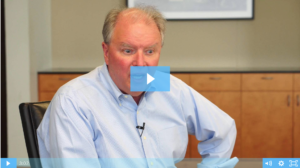
Once you’ve done the work to attract new website visitors (the A in ACEM), you must then move on to C, capture. What good are a million visitors racking up your bandwidth bill if you’re not spending time converting them into email subscribers and buyers?
If you’re only trying to get new visitors to buy a product or subscribe to your magazine membership website, then you’re going to have pretty low conversion rates. How often do you visit a website and buy a product at first glance? Those chances are further reduced when it comes to a monthly recurring membership. Trying to get visitors to take action is even harder when you’re a publisher and their first page is likely an editorial page, not a sales page.
In order to convert more visitors into subscribers, we tell all publishers to focus on effective conversion architecture. This means turning every page of your website into a landing page by introducing one or more of these effective conversion elements:
OFIE (Order form in editorial): An OFIE is an embedded form that offers a free download in exchange for an email address. OFIEs are often fairly large, coupon-style ads, usually placed above each article, category page and tag page on your site, and simply require a user to supply an email address and click “submit”.
OFIN (Order form in navigation): These forms appear in the navigation panels of a website. While they are usually smaller in size than OFIEs, an OFIN’s strategic intent is the same: to quickly capture your visitor’s email address in order to grant access to a free special report or a free copy of a magazine or newsletter.
FLOATERS: Named a floater because it appears to float onto a webpage. This was a method created in order to fight back against pop-up blockers. While it may look like a pop-up, a floater does not open in a separate window and therefore cannot be blocked or banned. The floater is a tactic for increasing landing page conversion rates and may be used at nearly every entry point on a website, though it’s usually better to set a cookie to let the floater appear to the user only once upon entry to the site.
TEXT AD: These are found within editorial content to obtain an email address. It’s typically formatted between two horizontal rules, a couple paragraphs into each article, and promotes a free report with a link to the landing page to sign up and download
 Do you want to learn more more ways to convert website visitors into email subscribers?
Do you want to learn more more ways to convert website visitors into email subscribers?
Watch our webcast hosted by the Mequoda team, called How Can Capture (C) Be Improved?


